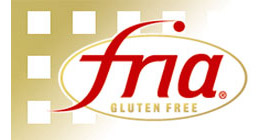|
|
A productive battle with Crohn’s disease |
Emer Mander-O’Beirne weighed only six stone nine months after she and Paul were married and, so bad was her Crohn’s disease, that three times she nearly died. Her husband Paul, describes her illness, her recovery and how they are putting the knowledge they gained to wider use. |
Emer and I fell in love in May 1998 and married in 2003 but we had only been married for nine months when Emer was diagnosed with Crohn’s disease. Her condition deteriorated rapidly in May 2004 and she was admitted to hospital as an emergency. Pregnancy – ups and downs! First Published in 2009 |
If you found this article interesting, you will find many more general articles and research reports on coeliac disease here, and lots of information on the management of coeliac disease here.
You can also find articles and research reports on gluten intolerance here and articles on a wide range of other digestive conditions here.
For hundreds of gluten free foods see our freefrom food section here, and for nearly 800 gluten-free recipes see here.
And if you would like to get our FREE fortnightly e-newsletter with new products, recipes, articles and all the latest news from the allergy and freefrom world, just sign up here.








